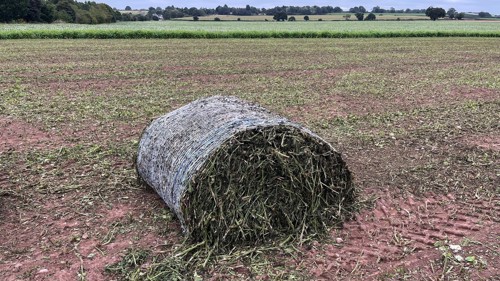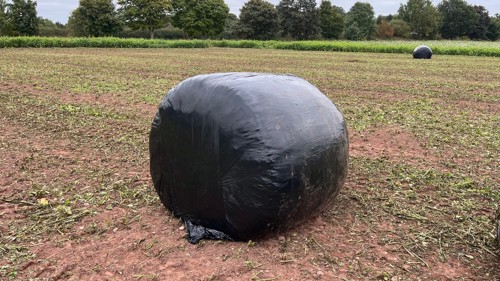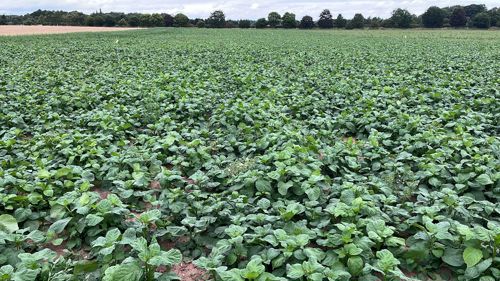Summary
In this field lab growers and researchers are investigating using potato trap crops for cattle silage.
The group includes growers and researchers from both the potato and cattle sectors. They will be growing the trap crop DeCyst Broadleaf (Solanum scabrum), to both reduce potato cyst nematode (PCN) and experimenting with using it for cattle feed.
This project seeks to investigate:
- Whether it is possible to generate a silage from DeCyst Broadleaf
- The nutritional value of the silage
- The feed safety of the silage
- The palatability of the silage
How it works
The threat posed to potato growers by PCN is intensifying, and the only chemical control is likely to be withdrawn in the next five years. This could lead to a 20-25% reduction in UK potato growing area.
Trap crops have been proven to be a non-chemical alternative to controlling PCN, offering up to 80% efficacy (see previous field lab: Establishing potato cyst nematode trap crops).
However, they cost the grower in both money and time, and since they are grown in the field the year before the potato crop they use land which could be used for other crops.
Trap crops have good levels of protein and calcium, and are leafy, which could make them a viable feedstock for cattle in the UK.
If trap crops could have other uses such as cattle feed it will enable a single crop to do two jobs in an integrated farm system.
Trial design
1. The DeCyst Broadleaf trap crop will be grown and yield will be assessed (t/ha). The group will then carry out different chopping treatments to discover the best way to process the plant for effective drying. A minimum of 10 bales per treatment will be made. Dry-matter will be assessed prior to baling to ensure the plant material is in a fit state to be baled.
2. To determine the nutritional value and feed safety of the silage, three composite samples from bales will be sent for analysis.
3. To determine the palatability of the silage, a cattle experiment will be established (subject to the safety of the silage) comparing trap crop silage, grass silage, and a mix of trap crop with grass.
If there is any doubt about the safety of the silage to cattle, the palatability section of the trial will be reduced in scope or dropped in favour of more intensive toxicity assessment of the silage.
Trial postponed until 2026
Silage update
The Broadleaf Crop was cut/mowed on the 13th of September and reached a height of roughly

It was baled and wrapped on the 17th September.

Unfortunately, the crop did not pickle so we have been unable to feed the material to animals as a silage
We are now waiting for results of the nutrition lab tests.

Plant establishment
The group report very good establishment of the Solanum scabrum trap crop but are hoping for good weather to enable the trap crop to outcompete weeds, particularly groundsel. Groundsel is a poisonous weed for cattle, so the group are determining whether there is a safe level that can be permitted within the silage mix.
Harvesting date will be important; the group hope to harvest once the groundsel has been shaded out, but before the trap crop flowers to avoid development of berries on Solanum scabrum - these contain toxic compounds (glycoalkaloids), a trait of many plants from the Solanaceae family. Once flowered, Solanum scabrum should be cut within 10 days as flowering triggers berry growth.

Establish crops of DeCyst Broadleaf
Jul 2024
Monitor the crops and record any pertinent information.
Jul-Aug 2024
Mow, bale and wrap the DeCyst silage,
Aug 2024
Sample reserve bales for nutritional and toxicity analysis.
Jan-Mar 2025
Carry out silage treatments and cattle consumption trials
Jan - Mar 2025
Trial postponed until 2026 due to crop failure
Group Coordinator

Richard Griffith
Produce Solutions
Shrewsbury
Richard lives in Shrewsbury and works with the Produce Solutions team in the West Midlands, assisting in other areas of the UK when his knowledge and expertise are required. He has a wealth of experience gained from 35 years within the potato industry, having spent time in farm management, agronomy, seed sales, account management and ware procurement.